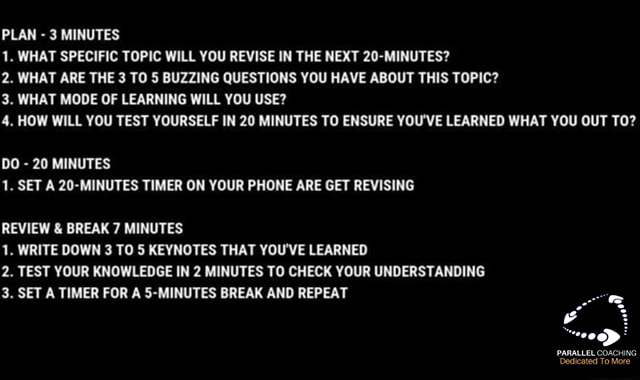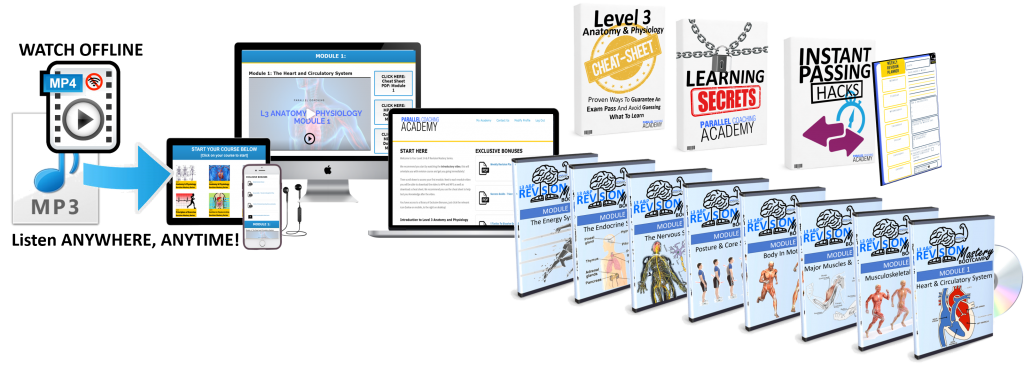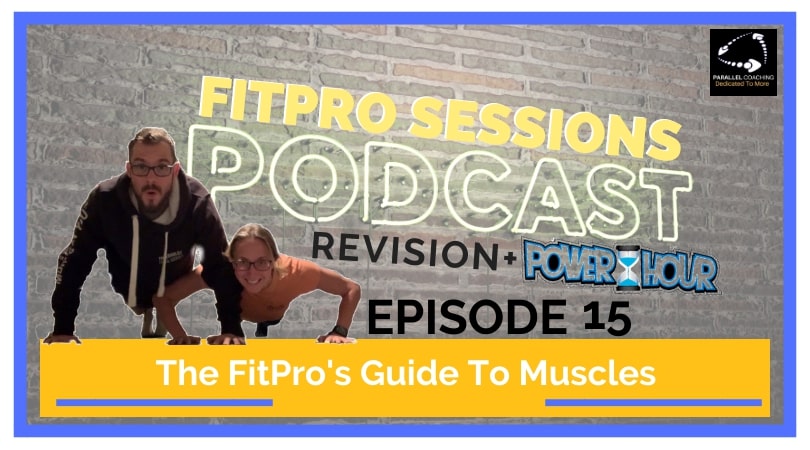Today’s podcast episode is the FitPro’s Guide to Muscles where Neale and I dive deep into muscles that you need to know as a Fitness professional and how to learn them with simplicity.
We cut through the confusion and highlight lots of key muscle facts and revision tips that will not only help you pass your exam but set you up for success as a fitness professional. Also, join us at the end for the revision power hour, as Neale adds a clear structure to your revision session ahead.
Click the PLAY button below to listen to the entire episode
Grab the FitPro Sessions Podcast show notes:
Timestamps:
1:00 Intro to today’s FitPro Session and revision power hour
2:00 There are 650 muscles in the human body – how many muscles do I need to know for my exam?
3:40 The largest and smallest muscles of the body
7:15 What is the strongest muscle – interesting trivia
9:05 Considering the muscles as one rather than lots of individual muscles
11:00 What are tendons and ligaments?
12:30 The FitPro’s Guide To Muscles: Knowing the definition of key anatomical words
13:20 Muscles make up approximately 40% of the bodyweight
14:00 The heart is a muscle
16:00 The integration of the nervous system in movement
17:20 Complexity of movement for muscles and nervous system
20:00 Gradual progression is key
21:20 What is Recipricol Inhibition
24:00 Muscles can only pull, they cant push
25:00 Origins and Insertions of Muscles
27:00 Exam strategy if you aren’t confident about learning muscles
28:20 Why learning the muscles is key for Fitness Professionals
28:40 HOJI – an acronym to remember origins and insertions
33:30 Trying to learn all the muscles in one session
35:00 Start learning the muscles NOW
35:55 Learn the terminology first
37:12 “it’s nothing to do with your exam”
38:00 “It’s the single shift you can make in your thinking… to see the physiology changes in training”
38:55 “Consider that it’s nothing to do with the exercises”
41:50 Being Passionate about getting a result
44:15 The start of the Revision Power Hour
The Revision Power Hour Cheat Sheet:

The FitPro’s Guide To Muscles
There are 650 skeletal muscles in the human body. You need to learn 26 at Level 2 and 50 at Level 3 – so not so bad after all
Muscles are divided into three types:
smooth, cardiac, and skeletal
The largest muscle in the body is the gluteus maximus
It’s the main extensor muscle of the hip, though you may know it as the large muscle in the buttocks. It’s the largest muscle in the body because its main job is to support your trunk and maintain proper posture. The gluteus maximus is the main muscle used to help you walk upstairs.
The smallest muscles in the body are in your inner ear
They include the tensor tympani and the stapedius. They connect to your eardrum and hold your inner ear together. The smallest bones in the body are also in your ear.
The strongest muscle, based on its size, is the masseter
It’s a muscle in your jaw. It can close your teeth with a force as great as 200 pounds on your molars.
Muscles make up about 40 percent of your total body weight
The hardest working muscle in the body is the heart
On an average day, it pumps about 2,500 gallons of blood.
What are Tendons and Ligaments?
Muscles are attached to bones by tendons
Understanding the difference between tendons and ligaments can be confusing. In addition to attaching muscles to bones, tendons can also attach muscles to parts of your body such as your eyeballs.
Ligaments connect one bone to another in your joints.
Muscles and the Nervous System
The motor cortex on one side of your brain controls muscle movement on the other side of the body. The motor cortex on the right side of your brain controls the muscles on the left side of the body, while the motor cortex on the left side controls the muscles on your right side.
The brain sends movement signals through the spinal cord and out through the peripheral nervous system in your muscles.
The messages from the brain become more complex when there are more muscles involved in an activity, such as shooting a jump shot in basketball.
What is Recipricol Inhibition?
Muscles usually work in pairs
When one shortens, its corresponding muscle lengthens. Think about doing bicep curls. When you curl your arm up so the bicep is shorter, the tricep on the other side of your arm is straightened out.
Muscles can’t push. They can only pull.
When you’re pushing a door open, for instance, your muscles are actually pulling your elbow and shoulder against the door.
How to learn origins and insertions?
Use HOJI to learn and remember the difference between the attachments of the muscle. This works for peripheral muscles only (not the Core or Torso)
The Origin is closest to he heart and the Insertion is furthest from the heart
H= heart
O = Origin
J = Joint
I = Insertion
Read more about HOJI with this bog:
Typical muscles that come up in the L3 exam include: adductors, hamstring, Quads, Lats, Rotator Cuff, Glutes
Why peeps find it hard to learn origins and insertions
There are a lot of muscles to learn so don’t try to learn them all in one revision session. It is much better to break them into zones of the body and spread out your learning over days, weeks and months (depending on how far away your exam is)
This is exactly what we do for you on the Muscle Memory Sprint:
Why knowing muscles is key for a Fitpro:
- Learning where muscles start and finish and the joint actions associated allows us to understand what exercises will help adapt that particular muscle.
- PASSION – if you want to grow muscle or lose weight we must know whats going on at a deeper level
- As Fit pros we are teachers of the body, so we must know about the body
Guide To Muscles – Mock Questions
Test your knowledge by answering these three mock questions: answers are at the bottom of the blog.
Q1: Which of the following muscles is responsible for Hip Extension?
A. Bicep Brachii
B. Rectus Femoris
C. Gluteus Maximus
D. Iliopsoas
Q2: According to the rule of Recipricol Inhibition, what happens to the antagonistic muscle when agonist concentrically contracts?
A. Eccentric Contraction
B. Concentric Contraction
C. Relax and lengthen
D. Relax and shorten
Q3: What is the function of the tendon?
A. To connect muscle to bone
B. To connect bone to bone
C. To connect muscle to muscle
D. To allow for absorption of key minerals
Test your knowledge, by reading the answers below.
Download More Mock Questions for FREE just link these by clicking this link: MOCK QUESTIONS

ANSWERS
Q1 = C
Q2 = C
Q3 = A
Need more help?
Discover How 6500+ Fitpros In Training Are Walking Into Their Exam With Confidence And Guaranteeing A Pass
You get a video and cheat sheet for each of the modules in your Anatomy and Physiology.
Are you tired of spending hours reading from a manual or clunky online learning that finds you clicking through slides leaving you understanding nothing?
Research shows that relying on this old way of learning isn’t enough to guarantee a pass, let alone feel confident walking into your Level 3 A&P exam.
The revision mastery Bootcamp takes your revision to the next level.
You will learn via structured video tutorials, cheat sheets and audio downloads… it’s just like having a 121 tutor on your phone or laptop, ANYWHERE, anytime.
Only this way, you won’t fall asleep whilst revising and you’ll actually learn to enjoy anatomy.
This is not another course with more exams – it HELPS pass the course you’re already enrolled on!
“EVERYTHING You Need To Learn, Revise And Pass Your Level 3 Anatomy & Physiology Exam”
If you want to get your revision structured, learn everything you need to know and feel confident on exam day, then click the link below:
https://revision.parallelcoaching.co.uk/l3ap-revision-mastery-bootcamp-13

See you on the inside
Dedicated to More
Hayley “Guide to Muscles” Bergman
Parallel Coaching
P.S. You can also find us on the following platforms:
Instagram: https://www.instagram.com/parallelcoaching
Facebook: https://www.facebook.com/ParallelCoaching
Twitter: https://twitter.com/ParallelCoach
YouTube: http://bit.ly/2F1Z1bs
Download all FitPro Session Shownotes: HERE

